Dr Neha Momin is the winner of the best case with toughest case selection and the popular choice award in the DR Pronto Esthetic Challenge 2, 2021-2022
Introduction
At first glance, a class III direct restoration can appear to be a fairly routine procedure. However, placement of physiologically contoured, esthetic Class III composite restorations can be a deceivingly difficult procedure. Often, these types of lesions present with limited clinical access, making traditional paste composites tough to place without creating marginal voids.
Flowable composites are better suited for this task due to their ease of placement. With all parameters being "ideal," a bioactive resin may be perfectly suited to restore these types of lesions, as long as it can produce the desired esthetic result.
With Activa ™(Pulpdent ®, USA), we have the ability to treat the tooth from within and strengthen tooth structure by replacing the missing calcium and phosphate that is lost in the decay process. Activa ™ is the first esthetic restorative to not only give us fluoride release and recharge, but also calcium and phosphate, which are the building blocks of tooth structure. This brings strength to the restoration and allows to truly restore a tooth, not just repair it.
Activa™ Pronto chemically bonds to teeth and seals against bacterial microleakage. It is far more durable than glass-ionomers and resin-modified glass-ionomers (RMGIs), and is as strong as and even more fracture resistant than traditional composites, which are hydrophobic and do not have bioactive properties.
Case Report
A 22- year old female patient presented with a chief complaint of discolored anterior teeth giving unesthetic appearance.
The clinical findings of the detailed diagnostic evaluation revealed crowding in upper & lower teeth due to which, interproximal hygiene maintenance was difficult, leading to class III caries in 12, 11, 21 & 22.
The patient’s dental needs were explained to her & she was offered the option of restoration of upper anterior teeth 11, 21 & 22 with Activa™ Pronto, followed by orthodontic treatment for alignment of upper & lower teeth for better esthetics and maintenance.
Restoration of rotated and overlapped 12 was planned during the 2nd / 3rd month of orthodontic phase, once it was in a better position to get good access & accurate contacts.
In this case report, the esthetic restoration of teeth 12 and 11 with warmed Activa™ Pronto after tooth blasting has been presented.
Restorative Approach
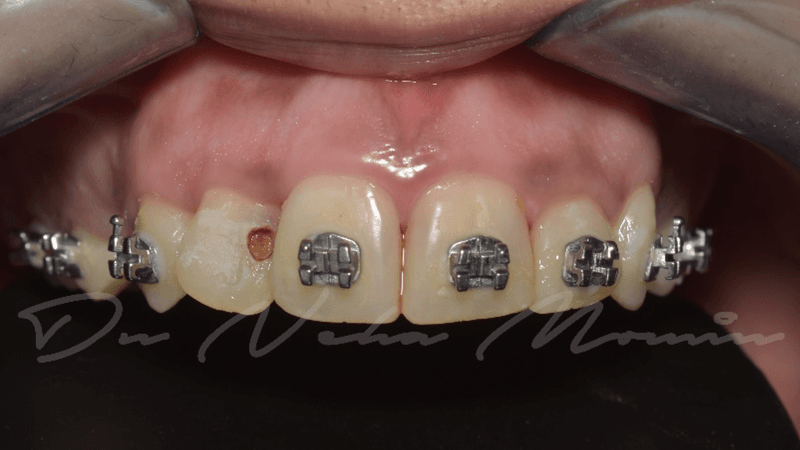
After the teeth were anesthetized, oral prophylaxis was done. Appropriate shade of the tooth was determined. After this, under rubber dam isolation, caries were excavated from mesial surface of 12 and distal surface of 11. (Fig 2)
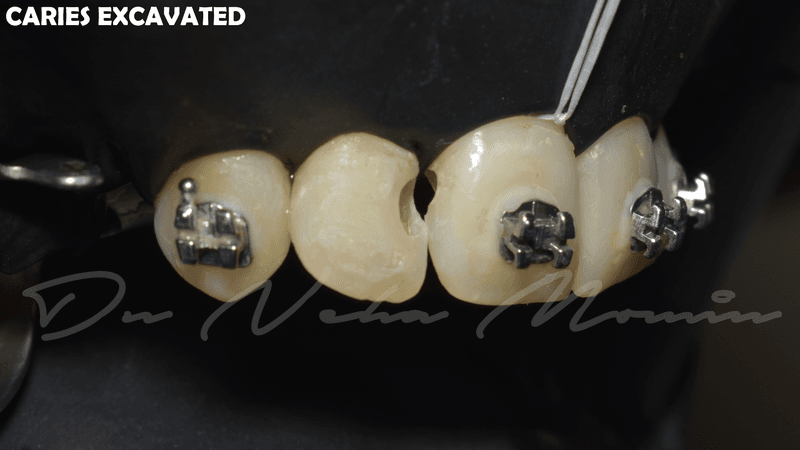
Bevel refining was done with disc for smooth transition of the bevel with normal tooth surface which aids proper blending of composite. After that, tooth was blasted with aluminium trihydrate (Esthetrix Blaster) to remove biofilm for predictable bonding to fresh tooth surface (Figure 3.)
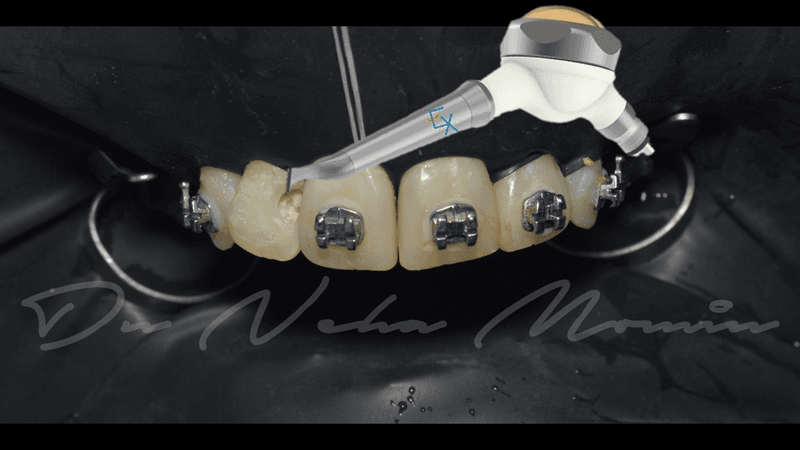
The preparation was etched with 37% ortho-phosphoric acid (Etch-Rite, Pulpdent) several millimeters past the bevel for 15-20 secs then washed with water (Fig 4). Enamel was air dried to check for frosty white appearance. Dentin was blotted leaving it slightly moist and a 5th generation bonding agent was applied (DenTASTIC UNO, Pulpdent) and light cured for 20 secs.
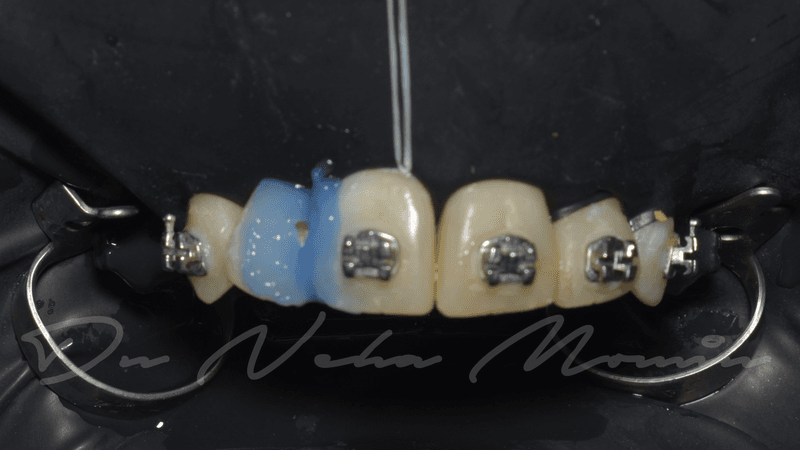
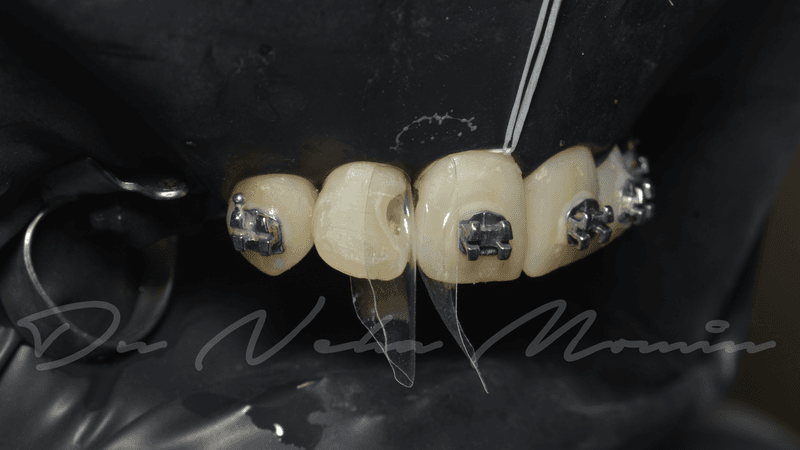
For this case I have used warmed Pronto to improve flow of its adhesive properties. Activa™ Pronto syringe was directly placed in a composite warmer (Esthetrix composite softener) for appropriate duration (Fig 6.)
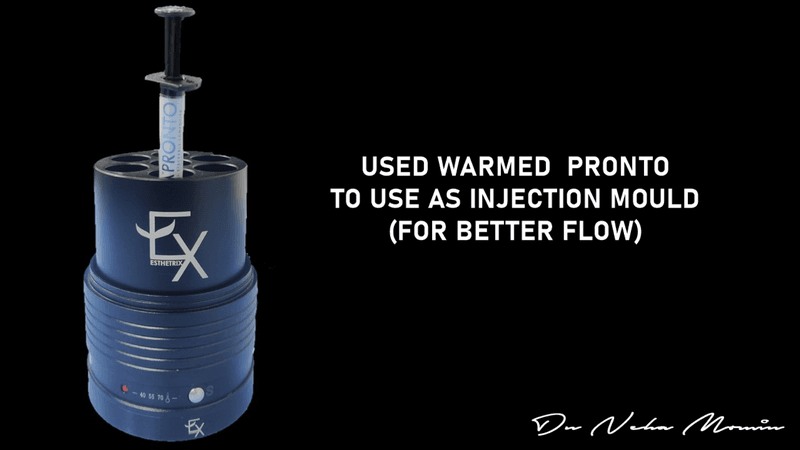
The cavity was filled in increments of 2mm with Activa™ Pronto shade A2. The matrix (Bioclear® matrix) was stabilized with finger palatally during composite placement as injection mold. The final layer was slightly overfilled (Figure 7.) Each layer was light cured for 20 secs (Figure8.) Final curing completed through glycerin to eliminate oxygen inhibiting layer.
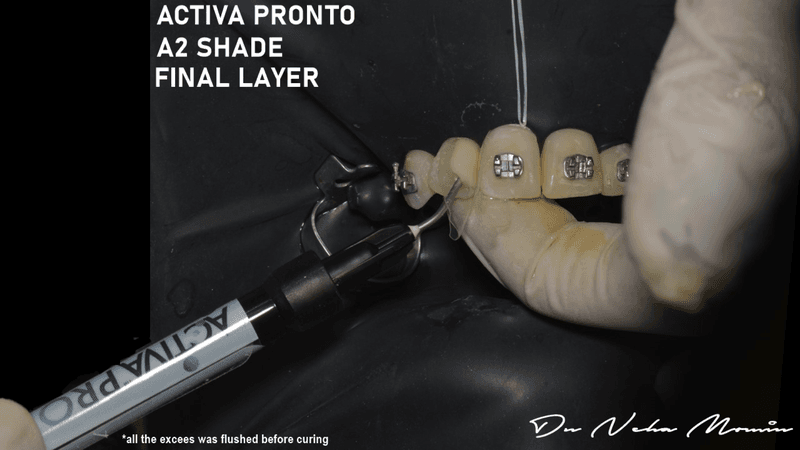
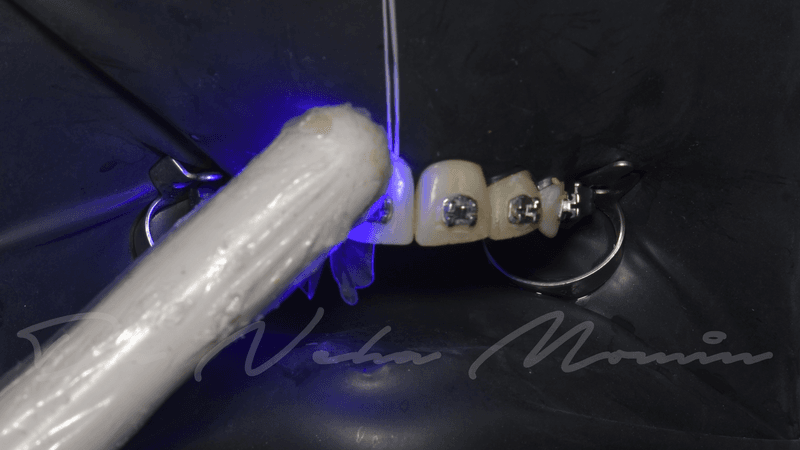
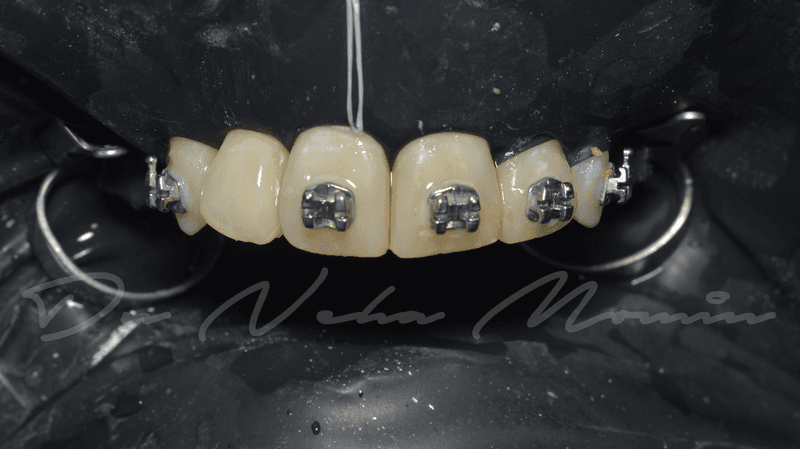
Finishing (Shofu) & polishing (Eve Diacomp) was carried out.
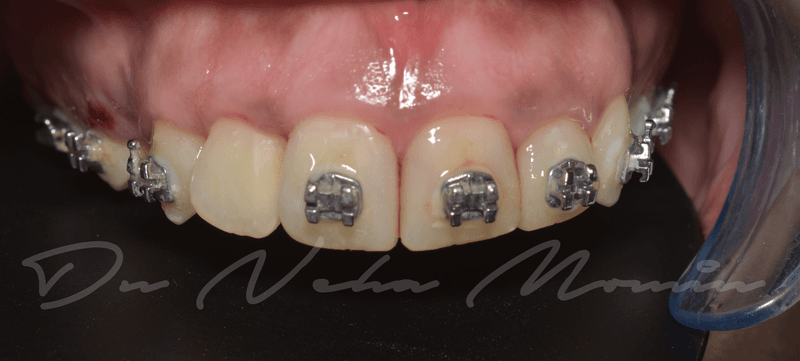
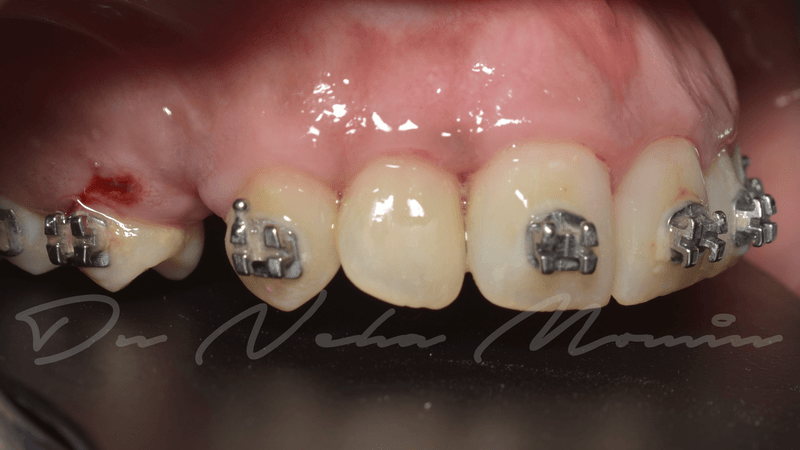
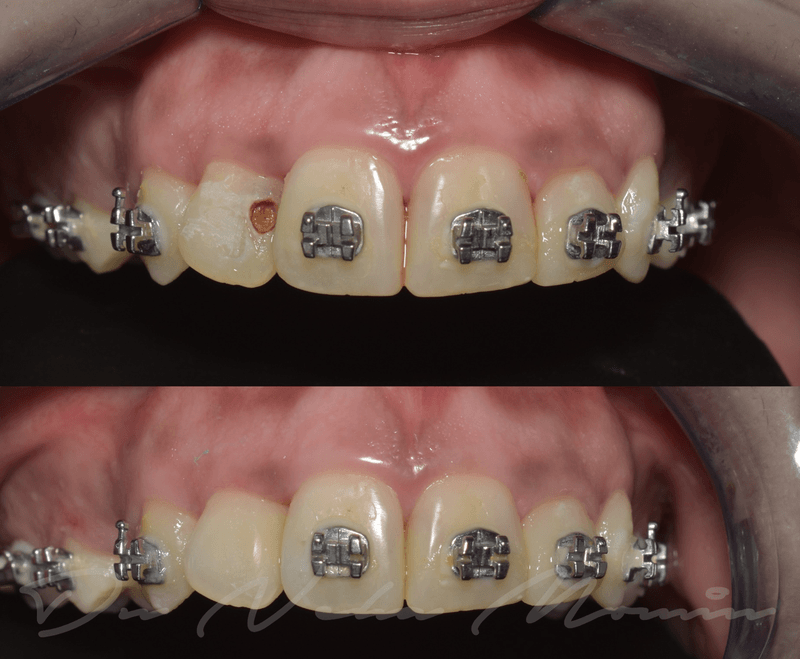
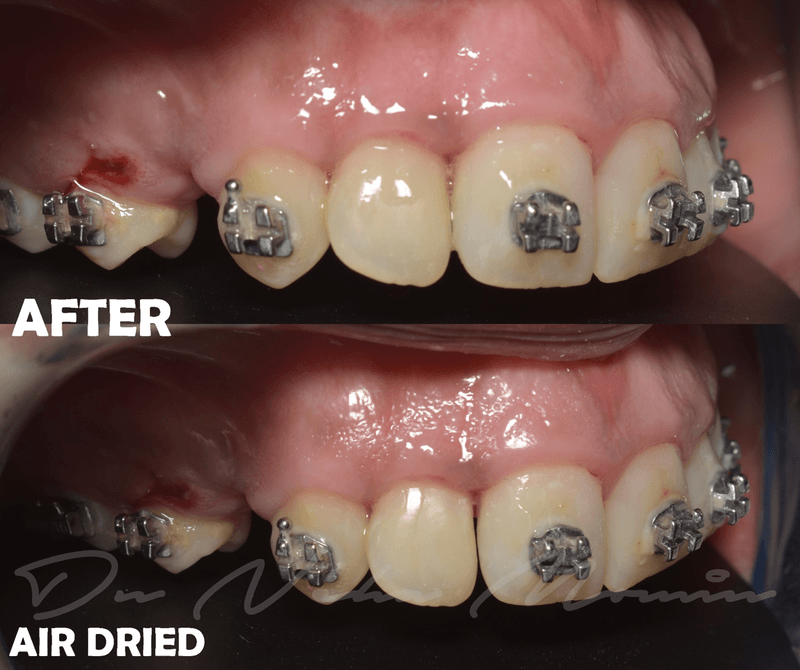
Notice the blending at the composite-tooth interface & highly polishable surface of Activa™ Pronto.
Discussion
Class III restorations are widely considered as the most durable resin bonded composite restorations. This is attributed to several factors:
- they are usually placed in low stress-bearing areas
- they have a favorable C-factor
- the cavity is usually surrounded by enamel.
With the introduction of modern adhesive systems, the clinical performance of Class III restorations has improved. Currently, composite resin is the first choice of material for direct restorations of anterior and posterior teeth.
Composites have been widely used in cosmetic procedures, due to diversity of shades, effects and their ability of bonding to many surfaces including natural teeth that allow detailing the dental structures. Composites have vastly increased the range of options available to the dentist and has opened up many avenues for the use of these materials for esthetic benefits in the patient’s existing dentition. The results with this material are quick, esthetic and economical, repairs are easy and the material per se does not call for unnecessary tooth reduction for its effective placement. In most instances, the final results are all in the control of the dentist, without the involvement of laboratory technicians thus providing the dentist an opportunity to exhibit his skills and finesse.
Conclusion
Activa™ responds to changes in the oral environment with release and recharge of calcium, phosphate, and fluoride. It stimulates apatite formation at the material-tooth interface. This natural remineralization process knits the material and the tooth together, penetrates and fills micro-gaps, guards against secondary caries, and seals margins against microleakage and failure.
Activa™ combines the esthetics, strength, and resilience of composites with bioactive properties that are superior to glass ionomers and RMGIs. Activa™ Pronto is moisture friendly and reacts to changes in pH levels in the oral environment to help fortify and recharge the ionic properties of saliva, teeth, and the material itself.
The bioactive difference supports a prevention model and helps maintain the health of the dentition.
References
- Robert A. Lowe, DDS, Class III composite Direct restoration with flowable bulk-fill composite, Inside Dentistry, January 2019, volume 15, issue 1.
- Austin J Dent. 2015;2(1):1012. Aesthetic restoration of Maxillary incisors with composites: Case Report
- Tayseer Maaly and Salwa El Sayed, evaluation of flexural strength for a bioactive restorative material, nanocomposite and resin modified glass ionomer: a comparative study, Egyptian Dental Journal, Vol65, 3637:3641, October 2019
- Sillas Duarte, Jr, DDS, MS, PhD, QDT Quintessence of Dental Technology, Quintessence Publishing 2019
- Kenneth W. Aschhem, esthetic dentistry, A technical approach to techniques and materials, 3rd edition
- Ratandeep Patil, Esthetic Dentistry an artist’s science, P R publications, 1st edition 2002

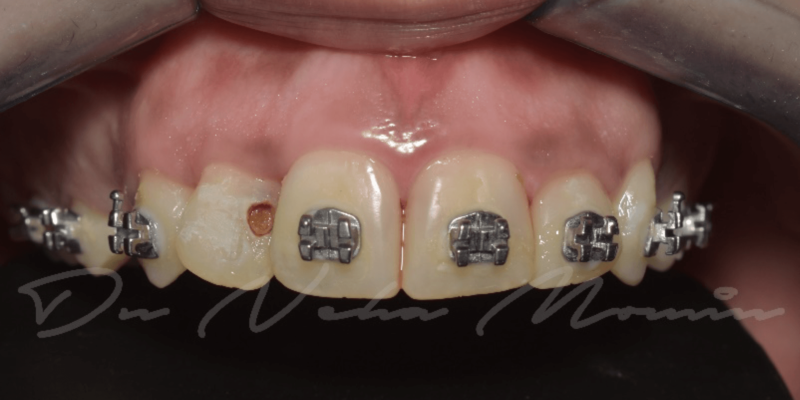


















Comments